Where I live in New England in the winter it can get as low as -13 F (-25 C). During summer heatwaves, it can reach over 100 F (40 C). Many of our houses and homes weren’t built for that, and in the United States, we aren’t exactly known for quality insulation. So how do we deal with heating and cooling our homes? Well, some of you may already know I’m crazy about heat pumps, but I came across a local company, called Flooid, that opened my eyes to the potential of cascading heat pumps. The constant refrain that heat pumps can’t work in the cold isn’t true anymore anyway, but this tech takes it to another level.
But what’s a cascading heat pump? And are our homes ready for them?
Cascading Heat Pumps
As I’m sure you could tell if you’ve seen just one of my videos before…I’m constantly on the lookout for new and exciting tech advancements, like some of the things I came across at CES this year. So when I stumbled upon a local company here in Massachusetts that’s doing some interesting work with heat pumps, I had to check it out in person. While cascading heat pumps aren’t a new idea, I haven’t seen much about them in residential use cases, so this really piqued my interest. But what is a cascading heat pump and why is Flooid’s version so special? To understand that, we have to brush up on heat pumps in general.
We’ve talked about heat pumps many times before, so if you want to learn more about them check out some of those episodes. Here’s a quick refresher. A heat pump is essentially a refined series of heat exchangers, using a working fluid to move heat around.1 Your refrigerator is already doing this, but it’s moving that heat in just one direction (from the inside of the fridge to the outside). Thanks to a reversing valve, a heat pump can heat or cool with ease. Because they’re just using a little physics exploit to move heat around instead of generating it, they have a high coefficient of performance (COP). At a high level, you get more heat energy out of the system than the electrical energy you put in. The higher the COP, the more energy efficient the device. Another way to look at it, the higher the COP, the more money you can save on your heating or air conditioning bill.2
What’s better than one heat pump? Flooid’s answer is…drumroll please…multiple heat pumps working as one. It’s not a new idea, but their implementation and flexibility of the system is pretty cool. The company refers to its use of a group of heat pumps as a multi-cascading system. Each pump or loop has a different working fluid with their own separate but overlapping operating temperatures.3 By working together, they can accomplish more than an ordinary single loop heat pump. It’s not a perfect analogy (at all), but it’s kind of like having multiple gears on your bike versus just one. This is Mark Maynard, Chair & Director of Research for Flooid. He showed me around Flooid’s lab in Easthampton, Massachusetts.
“So this is going to start pumping out some values very soon, and when it does, you’ll see that we’re at minus 11, which is lower than almost anybody can do right now. But you’ll see that our capacities are still high and our CLPs will be very high also. So this will always save you energy… if you’re above a COP of two or so, it will most likely save you money as well. So the other advantage of this particular system is when we’re at low deltas, which is the majority of the heating season, which would be around 40 degrees, 30 degrees, that type of thing. Our capacities are 200 to 300 percent. So when it’s normal heating temperatures here in New England, we’re not doing 100 percent capacity. We’re doing 2 or 3, so our 2 ton system is acting like a 4 or 4 and a half ton, even a 5 ton system at times. But, it still doesn’t use any more electricity.”-Mark Maynard
How do cascade heat pumps punch above their literal weight class like that? You see, heat pump or loop #1 warms to a target temperature on the upper end of its range, that’s when pump or loop #2 takes over. This temperature is well within pump #2’s range, so it’s not very hard for pump #2 to take it to an even higher temperature. We start with air that’s too cold for pump #2, and pump #2 makes it hotter than pump #1 ever could by itself. Teamwork!4
If that’s still arcane sounding, think of it like the lock on a canal. It’s hard to get your boat up stream, just like it’s hard to heat a space up. A lock can make this much easier by raising a boat up, and a loop can do the same with temperature. A job that’s too big or inefficient for one lock or loop can be made much easier by having a bunch of them working together. Each raising the boat, or the temperature, up. Then passing it onto the next lock or loop to raise it up again in turn. And locks and loops are both reversible. You can use a series of locks to get a boat easily downhill, and you can use a cascade heat pump to easily cool your house, too.
This kind of teamwork means that cascading heat pumps can be more energy efficient than a single-loop heat pump.4 It lets them handle bigger buildings or spaces that need a lot of heating or cooling, such as large commercial or residential buildings.56 If we can accomplish that by adding an extra loop, what would happen if we added even more loops? If we went… loopier?
The Potential
What happens when we add even more loops to our heat pump system? Each additional loop makes the system’s range larger, and thus makes its flexibility and efficiency even better. Remember, Flooid’s system isn’t a single, or even double loop, but a multi-cascading system. This gives them that impressive degree of flexibility, allowing their system to effectively heat or cool temperatures beyond HVAC units and even other heat pumps.5 We’ll talk exact stats in a moment. But first, we have to deal with the superheat refrigerant issue… a significant challenge for all heat pumps (really, their compressors), one that can even destroy them if we’re not careful.
What is the superheat refrigerant issue? Put simply, the working fluid or refrigerant is only supposed to return to the compressor in vapor form. If liquid refrigerant hits the compressor, it will kill the compressor. How does that happen? If we want a specific air outlet temperature, then our compressor needs to hit and maintain a specific, corresponding refrigerant flow rate. But it’s hard to stay perfectly on target. So, our little compressor is constantly adjusting its speed to be as close to the goal as possible. In doing so, it often overshoots the goal speed (and temperature!) and then has to back off. As a result it backs off too much and undershoots the goal, so it has to rev back up and ends up overshooting the goal again. Round and round it goes, overshooting and undershooting in a vicious cycle called oscillation.
How about an example? Let’s say we want to cool air, and our theoretical refrigerant boils into a gas around 200 F (about 93 C). The cooling takes place in the evaporating coil – where warm air flows over the coils and our refrigerant absorbs heat, evaporating into vapor. We want to keep the inside of this coil to at least 200F, so our refrigerant remains a gas when the compressor sucks it up. If we have too little refrigerant, it creates too large of a superheat, meaning we aren’t cooling the air very effectively. More importantly, the hot refrigerant can damage the compressor. If we have too much refrigerant, we will flood the compressor with liquid, which, again, kills the compressor. Our compressor is constantly trying to balance between these two extremes.
This balancing act creates that oscillating sine wave. What’s so bad about that? Well, there’s a space in the lower part of the sine wave where conditions are right for liquid to start forming in the compressor. Once again, that would be bye-bye compressor. As so often happens in engineering, this creates a cascading (pun intended) problem. If your system isn’t well optimized, it’s going to overshoot the working fluid’s happy place by a lot, creating greater oscillations or waves and more chances for fluid build up. Even worse, this oscillation can build, called resonance, meaning the overshoot and the undershoot can become larger with each cycle. Every heat pump has to deal with this issue.
Then how do heat pumps avoid this? The safest method is to dial up the temperature of their entire cycle so the lowest portion of the sine wave is almost always above the working fluid’s preferred temperature. However, turning up the heat on a system like this costs extra energy, equating to poor COP and energy efficiency. The tighter you dial in that sine wave and the control systems around it, the less of an offset you’ll need, which means a more performant system.
That’s exactly what the Flooid team says it’s done. They’ve developed very tight control software that closely manages the superheat of the vapor, limiting it to a single degree of variance. This solves the super heat issue without having to burn extra energy. The control system also optimizes the cascading system as a whole, micromanaging each loop and ensuring the most efficient use of loops and cascades. Using software to optimize your HVAC system like this has been around since the 1980s, but it contributes to Flooid’s great performance and opens the door to some neat tricks.
For instance, Flooid can deliberately make their first loop slightly less optimized. Seems counterintuitive, so why would you do that? Because it can make the second loop so good at its job, it covers for the inefficiency of the first loop. It also lets Flooid customize their heat pump to the situation at hand.
“But basically this is our technology and we, as you can see, we can tailor the technology to virtually any situation … we can do 100 percent boiler replacement for baseboard hot water. We can do steam… and we can do more…” -Mark Maynard
And while Flooid’s customizability and the control software are good (though not necessarily unique), it’s their performance range that really piqued my interest. For example, most heat pumps struggle in the cold, and need back up around -15 F (-26.1 C). However, Flooid has a cold climate system capable of handling temperatures as low as -32.5 F (-35.8 C). I personally got to see it take -31 F (-35 C) air and warm it all the way to 77.9 F (25.5 C), with a COP of 2.3. They also have a system that prefers temperatures between 10 F to 120 F (about -12.2 C to 49 C). That’s perfect for temperate regions like Virginia. In recent tests, their device was able to hit a COP of nearly 4 in milder temperatures, even while running at 50% power.5
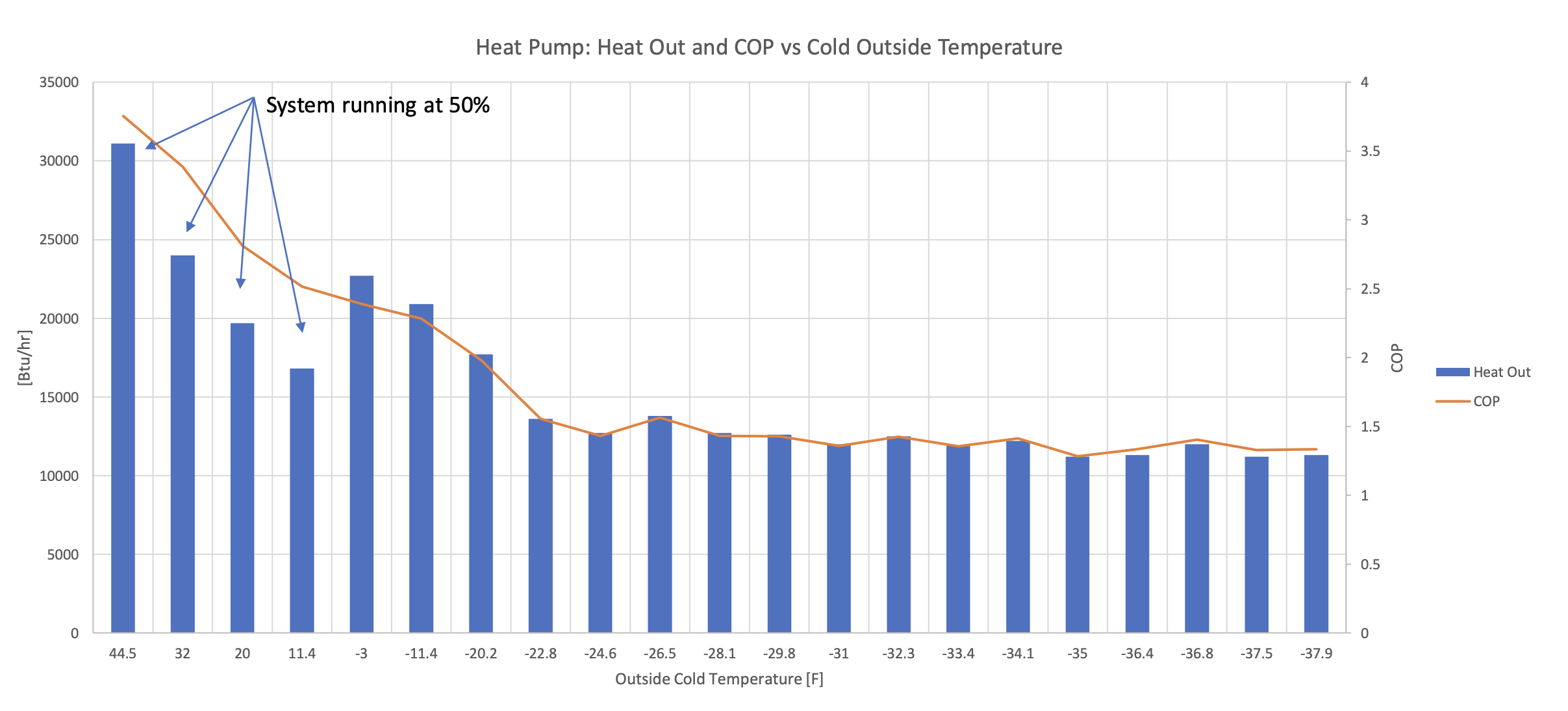
Also, being a heat pump and all, it works in reverse too. Taking extreme temperatures of around 110 F (43.3 C) and cooling them down to a much more comfortable range. Again, all while maintaining a COP of 2 or more. Flooid claims the system can handle really extreme temperatures of up to 130 F (54.4 C), and their president, Ben Schwartz, told me they’ve tested it all the way up to 140 F (60 C). Working at crazy high temps like that does cause Flooid’s COP to dip below 2, though if it’s that hot outside, we’ve got some bigger problems. For comparison, you average residential air conditioner hits a COP of 2.3 to 3.5 in mild temperatures,27 really start to struggle above 90 F (32.2 C),8 and flat out won’t work above 115 F (46.11 C).9 At higher temperatures of 110F+, Flooid can maintain a COP around 2. If you are trying to get 1000 kWh of cooling, you can expect to pay about $10 more per 0.1 drop of COP, with costs exponentially increasing if it drops below 1. So a worst case baseline of 2 provides a good buffer in summer months where heat spells are becoming more common.
Long, Hard Road Ahead
This all sounds fantastic, so there has to be a cascading heat pump catch, right? While it’s not a specific heat pump catch, Flooid is about to begin their pilot process.10 As we know from a lot of other technologies, this is a precarious point for startups. So many pieces of tech work phenomenally under lab conditions but fall apart when the rubber meets the road in real-life application. Because of this, finding the kind of funding to get something like this off the ground can be very challenging. If they can make it out of this stage, Flooid has a path to help make cascading heat pumps more affordable. Here’s Mark.
“…so, point of interest, everything here is off the shelf … so there’s no new technology here other than what we do. Same compressors, same exchangers. Everything is, the industry already builds, already makes, and already has available. So it’s not like we have to wait for the industry to start manufacturing new equipment.” -Mark Maynard
Using readily available parts should avoid supply bottlenecks and help lower manufacturing costs. Because their custom control system operates efficiently even at very low temperatures you shouldn’t need to spring for a backup heat source. This goes back to the “heat pumps don’t work in the cold” myth. They do, but as they get farther from their ideal temperature range, they can struggle to keep up with our heating demands in an energy efficient way. That’s why many heat pump systems are hybrid. They include things like resistive heat strips to supplement heat for those handful of days where outside temperatures outstrip the system’s ability to keep up. If a heat pump can handle temps down to -30 or -40 F (that’s -34.4 or -40 C) with a high COP, then hybrid systems go away. That could save space, time, emissions, and money.10
Another thing that should help with the price is certification.11 Lots of tax rebates are available for homeowners looking to upgrade to a certified heat pump. While the initial upfront cost is there, the tax rebates can sweeten the deal.
“We are ready to certify our cold climate air to air, our temperate climate air to air, and the boiler, the forced hot water boiler. We’re ready to go to certification, but it’s expensive. We’re a very small company, so when funds become available, then we’re going to certify it. Once we’re certified, then you’ll be able to get rebates…” -Mark Maynard
Speaking of boilers, Flooid also showed me a system that could replace your gas boiler. The versatility of heat pumps and cascading heat pump systems has incredible potential.12 Flooid isn’t alone. Several companies are offering cascading systems, like the ground source heat pump from Kensa,13 or the air-slash-water source heat pump from Clade ES.14 And it’s just not just newer, nimbler companies coming at space-heating from this angle. Even HVAC old guard Trane has a similar air and water source cascade heat pump.15 However, many of these systems are literally just daisy chaining separate heat pumps together, so multiple, large boxes, and condensers on the outside of the building. Mark drove home the point to me that their system is tightly integrated and doesn’t need multiple separate boxes and condensers.
“If you want to see what an actual unit would look like. In your house, we can come over here.
This is that system. In the size that it would be. And this would literally, you would take your furnace out. You would put this in, and this will do the heat and air conditioning of your house. But this would, this would stay in your cellar, and only a very small system would go outside. But it would completely replace your furnace and air conditioning.” -Mark Maynard
That’s a much more elegant system than I’ve seen elsewhere. All of this leads me to the big question, if cascading heat pumps are already out there (setting aside Flooid’s specific approach), why aren’t they everywhere? Well there’s no single, easy answer. It’s partly because simpler, cheaper, single heat pumps have only recently become mainstream.16
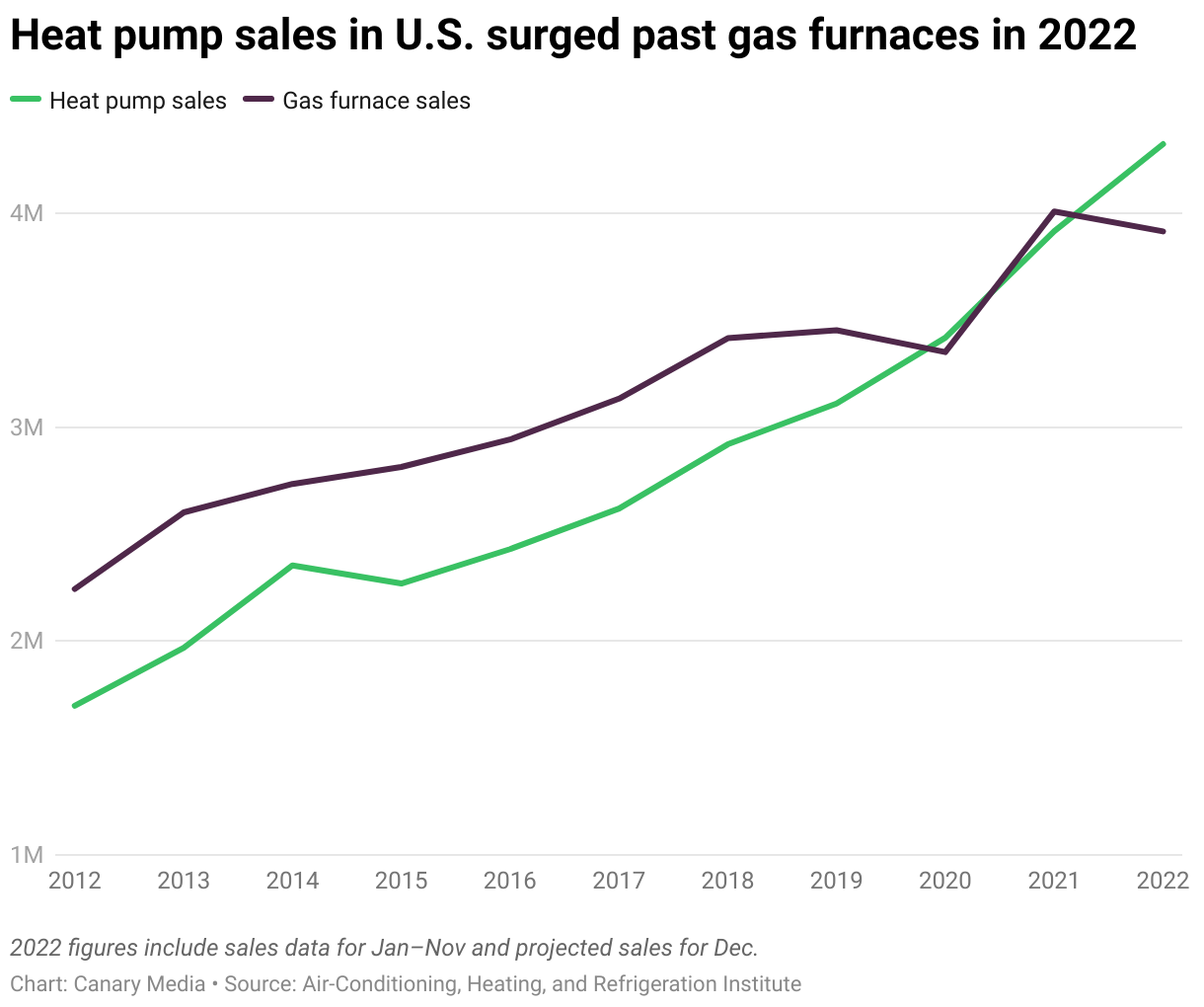
It’s going to take time before the upgrade gets its foot in the door. There’s also cost issues. In previous videos we’ve noted that the big thing standing in the way of heat pump proliferation is their cost. Even with rebates, they’re expensive. And up until now cascade heat pumps, with their more powerful and complex technology, are appropriately more expensive.17 As such, you’re more likely to find cascading heat pumps in places with specific, intense demands that are also able to absorb the cost. Places like hotels, hospitals, semiconductors plants, and even some types of textile manufacturers.181920
Even with its customizability, a cascading heat pump isn’t necessarily the best fit for every job. Flooid’s 2-ton system might punch as hard as a 4-ton system for less money, but if your needs are satisfied by a traditional single loop system, it all comes down to cost of ownership. Flooid says you should come out ahead on that front with theirs, but your mileage might vary. A study from the University of Ontario’s Institute of Technology (UOIT) has shown that cascading isn’t always the most efficient option either. In extreme lows and highs, you might be better off just running two identical heat pumps instead of a cascading tandem system.21
It could also just be a matter of economies of scale. Most of the other companies doing cascaded heat pumps are gearing them for commercial properties, not residential homes. This might be because commercial properties tend to be newer construction with modern insulation.There’s also some additional incentives out there for commercial spaces. Some of which, like the oh-so-evocatively named 179D tax deduction, offer savings per square foot, so the incentives are stronger for larger spaces.22
So while multi-cascading systems aren’t a new technology, they are new to the residential market. If Flooid can make their small, flexible, compact design accessible, it could make a big splash in that market, and even open up some new ones.
- Venturewell – Heat Pumps Sustainability Workshop ↩︎
- Wikipedia – the Coefficient of Performance ↩︎
- Boahen, Samuel, and Jong Min Choi. 2019. “A Study on the Performance of a Cascade Heat Pump for Generating Hot Water” Energies 12, no. 22: 4313. ↩︎
- Boahen, Samuel & Choi, Jong. (2017). “Research trend of cascade heat pumps.” Science China Technological Sciences. 60. 10.1007/s11431-016-9071-7. ↩︎
- Flooid Heat Pump Data ↩︎
- H2X Engineering – Cascade Heat Pumps: Redefining Heating for Large Spaces ↩︎
- Today’s Homeowner – Air Conditioner Ratings ↩︎
- Fire and Ice HVAC – What Is the Cooling Limit of My Air Conditioner? ↩︎
- Coastal Homes – Can It Be Too Hot For An Air Conditioner To Work? ↩︎
- Flooid Power Systems – HVAC ↩︎
- Mitsubishi – The Inflation Reduction Act ↩︎
- Green Building Advisor – Replacing a Furnace or Boiler ↩︎
- Kensa Heat Pumps – Cascaded Systems ↩︎
- Clade – What is a Cascade Heat Pump Systems? ↩︎
- Trane – Cascade System ↩︎
- Chart: Americans bought more heat pumps than gas furnaces last year ↩︎
- IEA Report – The Future of Heat Pumps ↩︎
- Australia’s Department of Climate Change, Energy, the Environment and Water – Heat Pumps: An Emerging Trend in Australian Markets ↩︎
- Taek-Don Kwon, Woo-Hyun Jung, Jae-Weon Jeong,”Energy performance analysis of a cascade heat pump system for heating in a semiconductor fabrication plant,” Case Studies in Thermal Engineering, Volume 52, 2023 ↩︎
- Clade – LARCH HEAT PUMP ↩︎
- R. Soltani, I. Dincer, M.A. Rosen, “Comparative performance evaluation of cascaded air-source hydronic heat pumps, Energy Conversion and Management, Volume 89, 2015 ↩︎
- Engineered Systems Magazine – Decarbonizing Buildings Using Commercial Heat Pumps ↩︎


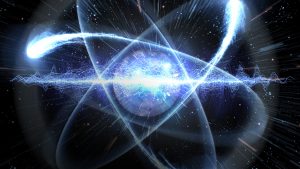
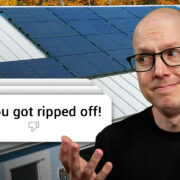
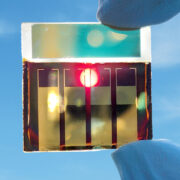
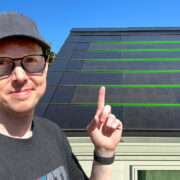



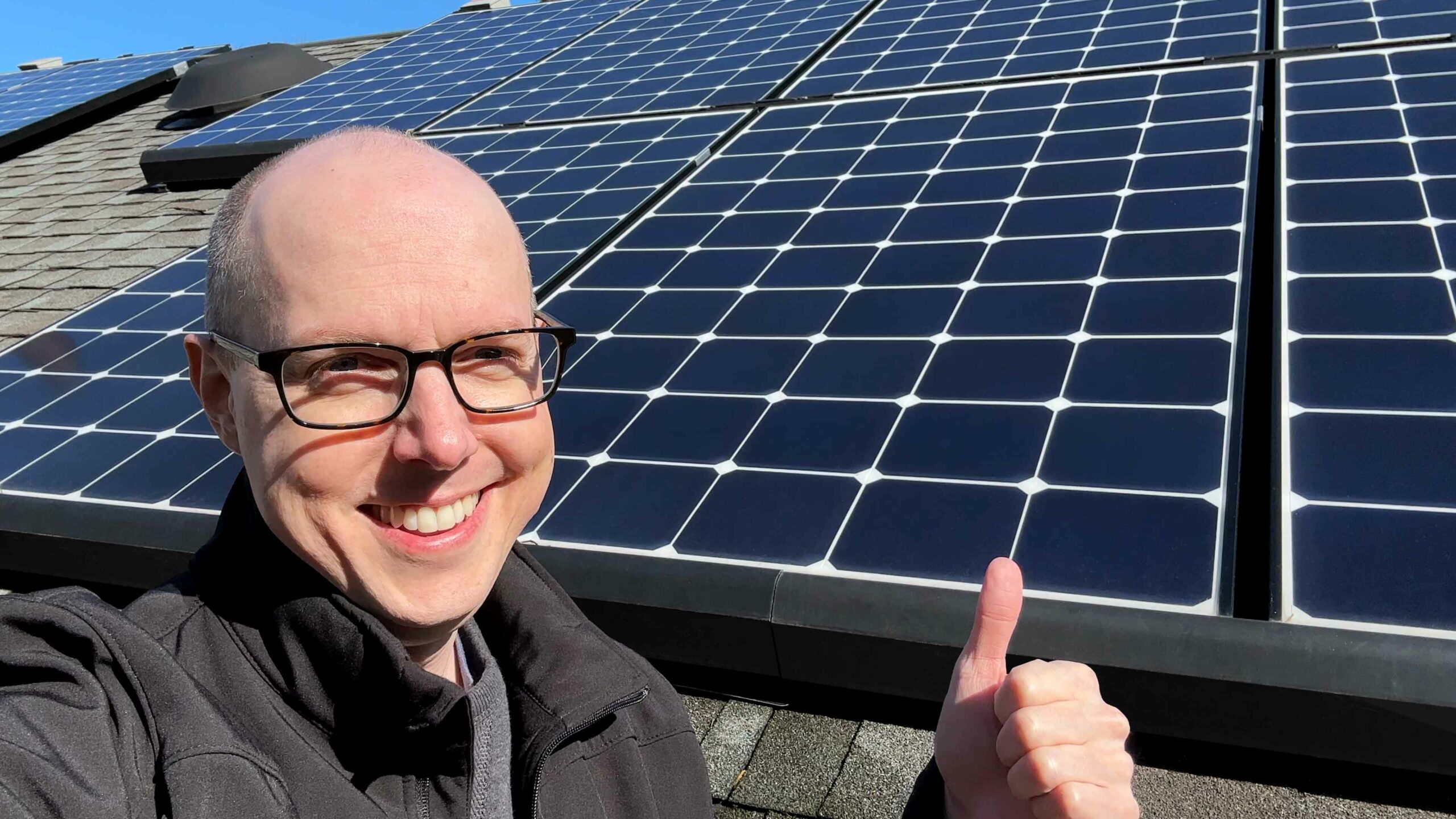


Comments